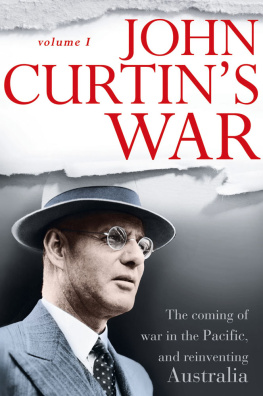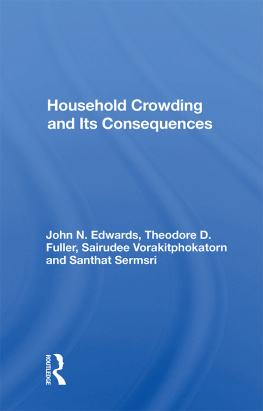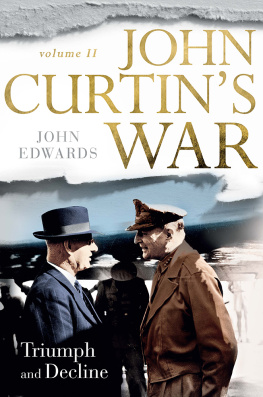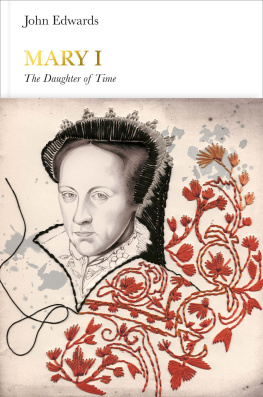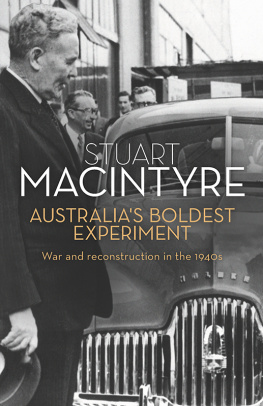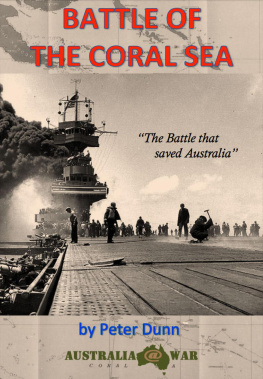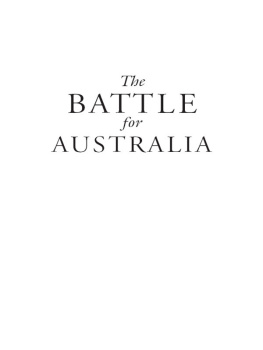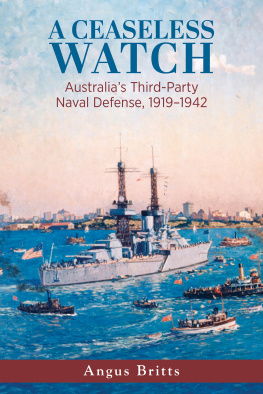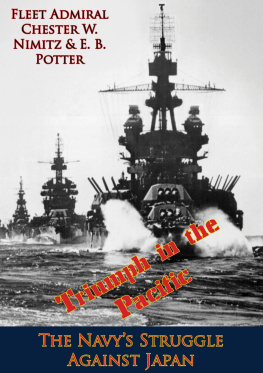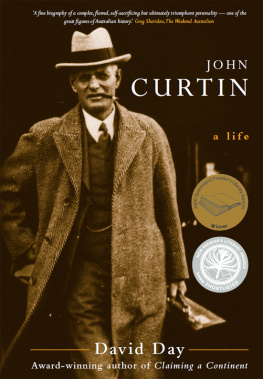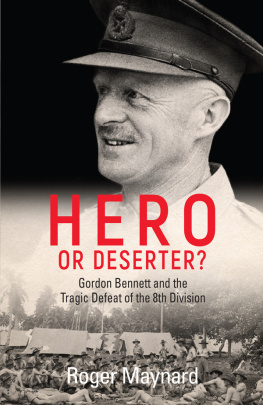I am indebted to Penguin Australias Publishing Director Ben Ball for encouragement and comment on parts of earlier drafts and for guiding the book to completion. Working with Penguins splendid publishing team is a pleasure. I thank Hilary Reynolds who edited the draft, Mark Evans who painstakingly proofed the text, and Fay Helfenbaum, who kept it all together. Louisa Maggio designed the cover.
Before the final draft reached Penguin it was most carefully read and reread by friend and editor John Nethercote, who brought to the task both his vast knowledge of Australian politics and his attention to grammatical detail. Barry Howarth indexed the book with his customary care and thoroughness.
The book was first commissioned by the then Managing Editor at Penguin Bob Sessions, who responded helpfully to an early version of the beginning of the book. Before she left that interesting but unremunerative business, literary agent Mary Cunnane provided excellent advice, both commercial and literary.
As for my earlier book Curtins Gift I am indebted to Kandy- Jane Henderson, former head of the John Curtin Prime Ministerial Library (JCPML) at Curtin University of Technology for her early guidance and her continuing encouragement and interest. I thank her for reading and commenting on an earlier version of the book draft. Curtin University Adjunct Professor David Black, who has contributed vastly to Curtin materials through his carefully annotated editions of Curtins speeches and letters, was kind enough to read and comment on large sections of earlier drafts. So too David Wylie, formerly a researcher on the staff of the JCPML, generously gave time to read a draft. Harry Edwards and Alex Edwards helpfully commented on sections of the book. Deborah Hope gave this first volume a careful scrutiny, and made many valuable suggestions. With the late Ian Marsh, a close friend and a distinguished political scientist, I enjoyed many illuminating discussions on Australian political history.
I thank Gail Pearson, Mark Johnson, David Jenkins, David Bell and Brian Toohey for sending me important books and documents.
Thanks to the staffs of the National Archives of Australia, the National Library of Australia, the Bodleian Libraries, the Churchill Archives Centre, the Flinders University Library, the Library of Congress, the Franklin D. Roosevelt Presidential Library and Museum (and especially William Baehr), the Mosman Library, the UK National Archives, and the State Library of NSW. Through this long project the JCPML has been unstintingly helpful in assembling materials and providing a space to work with them, in responding to queries and guiding me though its immense inventory of online resources. I especially thank the Library Archivist Sally Laming. Thanks also to the Department of Defence for facilitating access to the War Cabinet rooms at Victoria Barracks, Melbourne.
Any contemporary account of Curtin, his colleagues, his opponents and his times depends on the earlier work of others. Previous biographies by Lloyd Ross and David Day broke much new ground and are acknowledged in the text. Even now Australias World War II official histories are indispensable, as is the magnificent series of the Documents on Australian Foreign Policy , Volumes I-VIII, published by the then Department of Foreign Affairs. In the course of research and writing I often consulted the work of David Horner, from his two volume dissertation written under Professor Robert ONeill at the Australian National University (later published as High Command ), through his books on Blamey, Shedden, and the decisions of War Cabinet and War Council. David Blacks book on Curtins speeches and writings, his book on Curtins letters and his book with Lesley Wallace on Curtin archival sources are now essential materials in writing about Curtin. For the JCPML, Heather Campbell produced an excellent chronology of Curtins life, Diary of a Labour Man, on which I have relied. Finally, thanks to the National Library of Australia for creating the Trove archive of digitised Australian newspapers, a tool that has transformed that aspect of research.
For Deborah, and for Alex, Clara, Daisy and Harry and for V J Carroll, the greatest Australian newspaper editor of his generation. He was my mentor in journalism, as he has been for so many.
In the group photograph of the new ministry taken on the morning of 7 October 1941 twenty men in suits are arranged in two rows, one row sitting and one standing. John Curtin is in front, sitting next to the Governor-General, Lord Gowrie. Curtins hands are folded, right over left. He has thinning grey hair and wears spectacles. In this photo he cannot hide the cast in his left eye by looking down or turning side-on to the camera. He wears a white shirt and a dark three-piece suit with a high waistcoat. In the breast pocket of his suit there is a folded triangle of white handkerchief. It is a black and white photograph but we know Curtin is in his good blue suit, not only because it is the one he usually wears on formal occasions but also because he has only three, and this is neither the brown nor the blue with the white pencil stripe. He wears his black shoes, not the brown. Of his six ties he has chosen one that is plain and dark.
In this photograph of Curtin a few moments after his swearing-in as Prime Minister and Minister for Defence Co-ordination we cannot see what he is, but we can see what he is not. In his expression there is no grandeur, no easy command, no triumph. He looks, as always, ill at ease, as though caught in a conversation from which he hopes soon to excuse himself. Those who know him well will remember his sincerity, his intelligence, his reserve. They will not recall him as an imposing man, like his political opponent Bob Menzies. He is, as one of his secretaries, Hazel Craig, would say, a very, very normal nice human being. He is also an adroit and accomplished politician, unusually free of vanity or illusion. He is often underestimated, which does not trouble him at all. It was only later, long after this photograph was taken, long after he was buried among the pines and gums at Karrakatta, that Artie Fadden would remember him as the greatest leader of his time in politics, and Harold Cox, an unsentimental reporter who had seen many prime ministers come and go would say of Curtin that he was the biggest figure in Australian politics since the colonies federated in 1901. Curtin did not look like a great man, Bob Menzies would one day write, though he undoubtedly became one.
It is now four days since the two independents in the House of Representatives joined Labor in voting down Arthur Faddens coalition government. Fadden had been prime minister only since the end of August, following the rebellion within the United Australia Party that forced Menzies resignation as prime minister. Curtin is Australias third prime minister in six weeks. He leads the first federal Labor government in a decade. He is fifty-six years old and it is the first time in his life he has held ministerial office. Ten years ago Curtin was so frequently drunk his colleagues referred to him as Poor John. He has been sober for the last six years, but he is not a healthy man. Patches of his skin are sometimes red and inflamed with psoriasis. He has spent many days in the last month lying on his bed at the Hotel Kurrajong, tormented by neuritis. Already he has heart disease. In the less than four years of life he has remaining he will do things that even now, posing for this ceremonial photo and already impatient to be driven back to Parliament House to chair his first Cabinet meeting at noon, he does not intend or expect or even imagine. Curtin himself will find that he cannot undo what he has done, though he will try.

